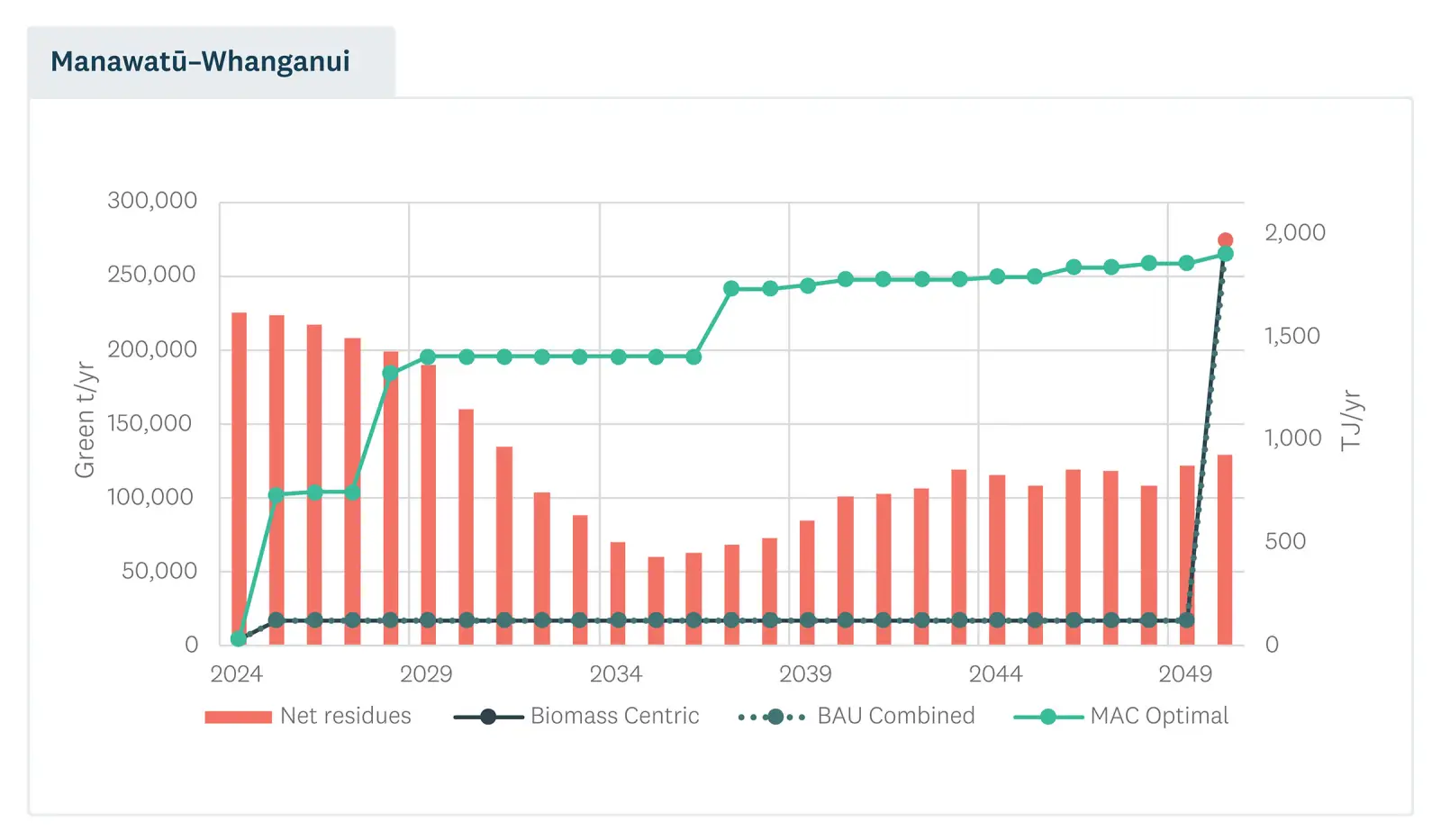Benefits for Manawatū–Whanganui
A Manawatū-Whanganui specific pathway will enable:
- a full view of biomass resource availability, the potential volumes, costs and potential local demand for bioenergy
- coordination of infrastructure and streamlining electricity demand for the future
- early insights for decision makers to improve efficiency and future proof infrastructure investments
- best use of information sharing to encourage demand flexibility through collaboration.
About the Manawatū–Whanganui RETA
A total of 42 sites spanning the dairy, meat, industrial and commercial sectors are covered by the Manawatū-Whanganui Regional Energy Transition Accelerator (RETA). These sites either have process heat equipment larger than 500 kW or are sites for which EECA has detailed information about their future possible fuel choices. Collectively, these sites consume 2,611 TJ of process heat energy, primarily from piped fossil gas, and currently produce 142kt per year of CO2e emissions.
A focus of the Manawatū–Whanganui report — the culmination of phase one of the RETA programme — is the exploration of renewable biomass as a cost-effective, reliable alternative for industrial high-temperature boilers. Both biomass and electricity are considered as fuel sources.
Energy efficiency and heat pump projects are also important for reducing energy consumption and right sizing the boiler investment.
The report explains a range of possible pathways, all of which show how the combined decisions of a range of process heat users may lead to common infrastructure challenges and opportunities from a supply perspective.
Across the 42 sites, there are 95 potential individual projects covering demand reduction, heat pumps and future fuel options. The marginal abatement cost or 'MAC Optimal' pathway sees fuel decisions that result in 5% of industrial energy needs being supplied by electricity and 95% supplied by biomass.
Insights explored in the Manawatū–Whanganui report
- How price sensitivities across gas and supply impacts pathways.
- The key role demand reduction and heat pumps play in decisions connected to energy and related infrastructure investment.
- Timeframes for different pathway scenarios, that is:
The business as usual or ‘BAU’ pathway, which uses actual project timing or 2050 where unavailable, is the slowest path.
The ‘MAC’ optimal pathway suggests 30% of fossil fuel reliance can be reduced by projects that are economic now.
- The dominance and affordability of biomass as a fuel for large industrial projects.
- The forecasts and mapping of regional stationary heat energy demand alongside renewable energy supply assessments.
Read the report
Download the Manawatū–Whanganui RETA report and discover the benefits of taking a regional approach to fuel choices and demand reduction.
Manawatū–Whanganui RETA Summary Report [PDF 4.2 MB]
Spare Electrical Capacity and Load Characteristics [PDF 11 MB]
RETA will support the region in unlocking new fuel options and ensure the balance of supply and demand contribute to energy security, affordability and efficiency.
Next steps
EECA is currently completing RETAs throughout the rest of the North Island.
We are happy to hear from anyone wanting to support the implementation of recommendations in the Manawatū–Whanganui RETA report.
Email RETA@eeca.govt.nz with any questions.
For more information on the RETA programme and the individual regions which have been included, visit the page below.



